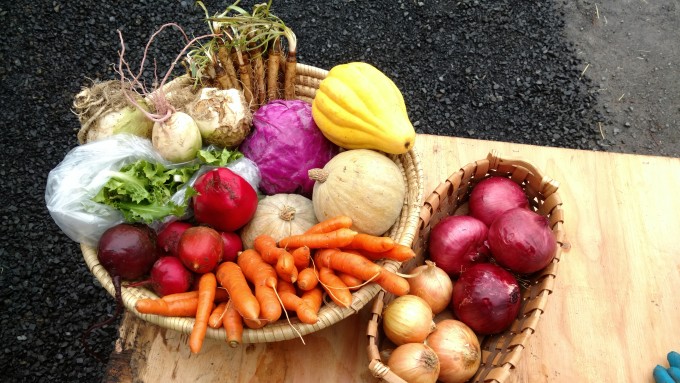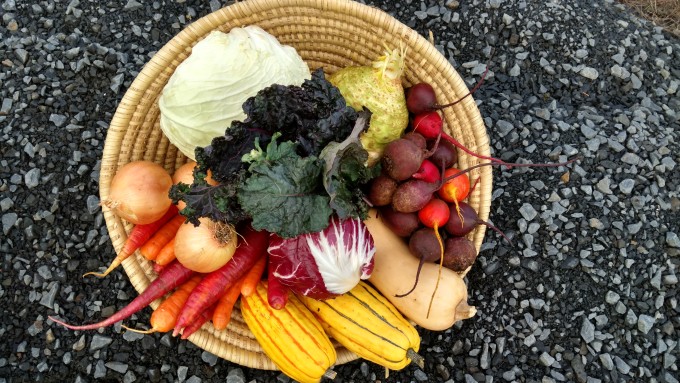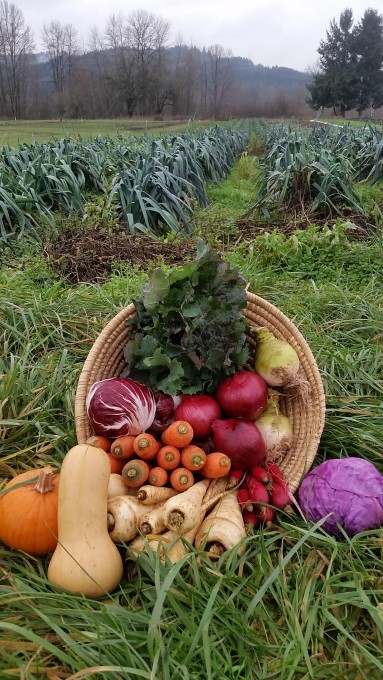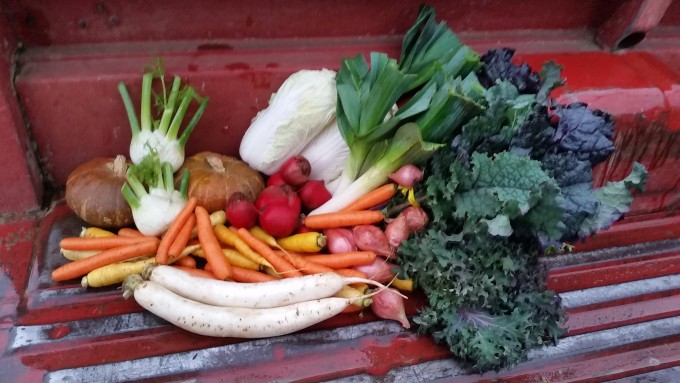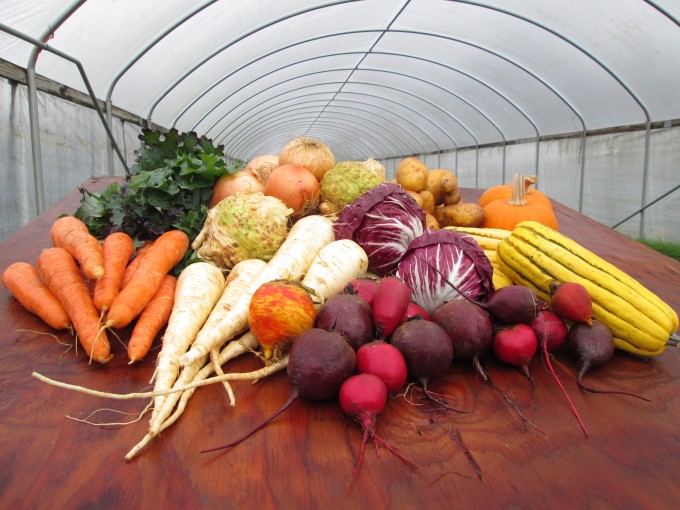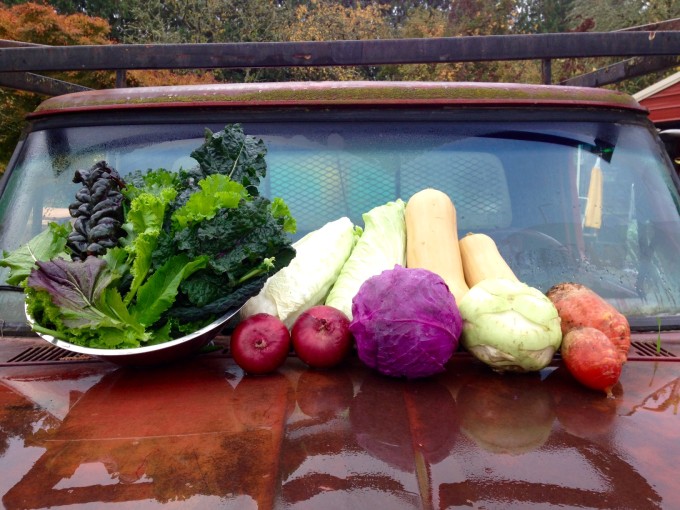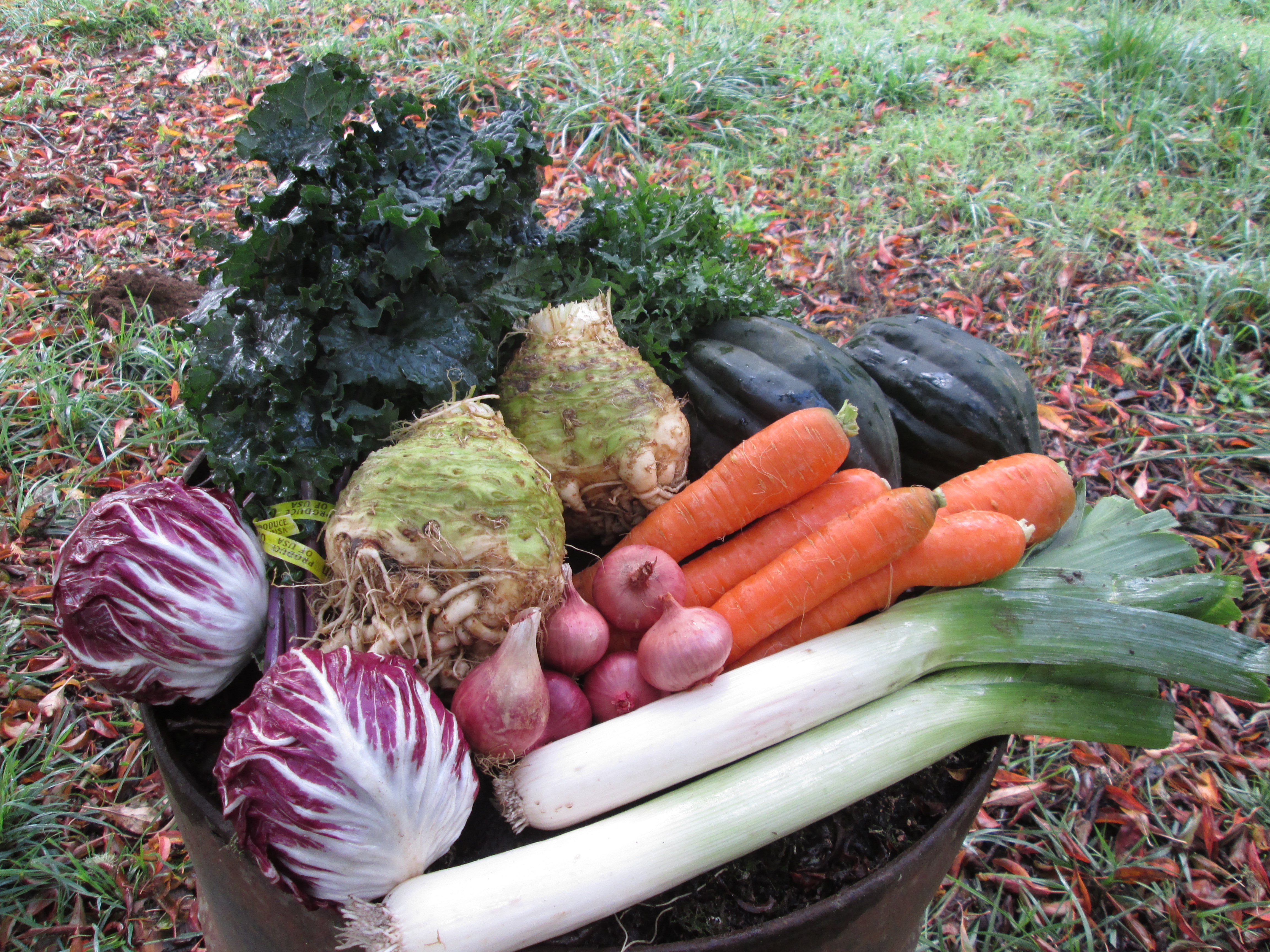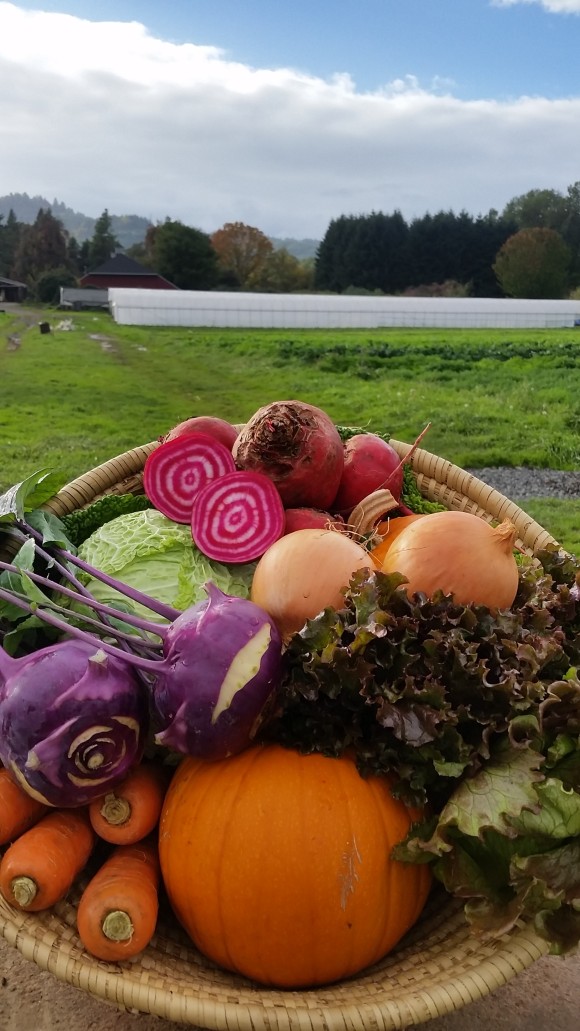In Your Share This Week
- Beets, red
- Cabbage, green
- Celeriac
- Leeks
- Mustard mix
- Parsnips
- Shallots
- Salad Mix
- Thyme
- Winter Squash, Long Pie or Crown Pumpkin
Crop Notes
Beets: I had the pleasure of being offered some beet kvass from someone who had created it from our beets. You may be asking, ‘What is kvass?’ Well its a beet beverage thats a little like drinking kraut juice. If you like kraut, pickle juice, or salty things…read on, because this is delicious, refreshing, healthful, and makes you feel like a million bucks!
Cabbage, green: This is a new cabbage variety that we trialled this year with great success. It’s very dense- these compact little guys weigh in several pounds heavier than other similarly sized cabbages that we grow. The leaves are very thin and tightly wrapped, which is why they are so heavy. I think these would be really nice candidates for some kraut or a light slaw.
Mustard Mix: The unseasonably warm January has been a real boon for our mustard beds! They have been slowly and steadily growing underneath row cover all winter long, and we were delighted to see how vibrant and beautiful they were when we peeled back the cover earlier this week. The finished product is a blend of two mustard mixes that come to us from Wild Garden Seed (who as you have probably noticed, provide a massive amount of our seed for the brassicas that play a large role in winter production). We use both their hot (indica) and mild (japonica) mustard blends for an amazing rainbow of genetic diversity, color, and texture. You could use this raw and chopped for a zesty salad or you can cook it as well, in which case it loses most (if not all) of its heat. I love mustard greens on a sandwich- so much more exciting than lettuce! As a general rule of thumb, the flatter, smoother leaves are the mild mustards, and the thicker, more ruffled leaves are the hot ones that have a kick.
Parsnips: We dug up the last of what was in the field just recently- so these should be nice and sweet. The cull rate was rather high, so our yields were a little lower than we were predicting (not providing enough to do two distributions) so we thought we would load it up a little more this week and say goodbye to parsnips for the year. One of my favorites is to slice them into half-rounds along with leeks, put them into a 9×13 baking dish, cover the whole thing with heavy cream and a little freshly grated nutmeg, and bake at 375 until the veggies reach your desired tenderness. I like to take the tinfoil off halfway though so the cream can reduce and brown the top just a little. Great over rice or orzo.
Pumpkins: This week you will find either a Crown Pumpkin or a Long Pie Pumpkin in your share. These are both great tasting and very long storing pumpkins that make phenomenal pies, and have a nice texture for savory applications like curries, root roasts, etc.
Salad Mix: The depths of winter is a really fun, exciting, and challenging time to produce salad in the Willamette Valley. We are SO EXCITED about salad, especially the wild array of greens available to create the winter salad palette. We utilized the very last of the greens from our greenhouse (which between harvest yesterday and writing this now, has been tilled and is on its way towards an early-season beet future) as well as an assortment of cutting greens from outdoors. Some of the plants are rather young, and others like the kale have been around since last fall, but are just now putting on a fresh flush of growth that can be tapped for tasty and festive salad additions. We got so excited about the diversity of items in the mix, that we teased each individual item out and made this little poster…it has over 25 unique items in it, plus miniature versions of the hot and mild mustard blends!!!



